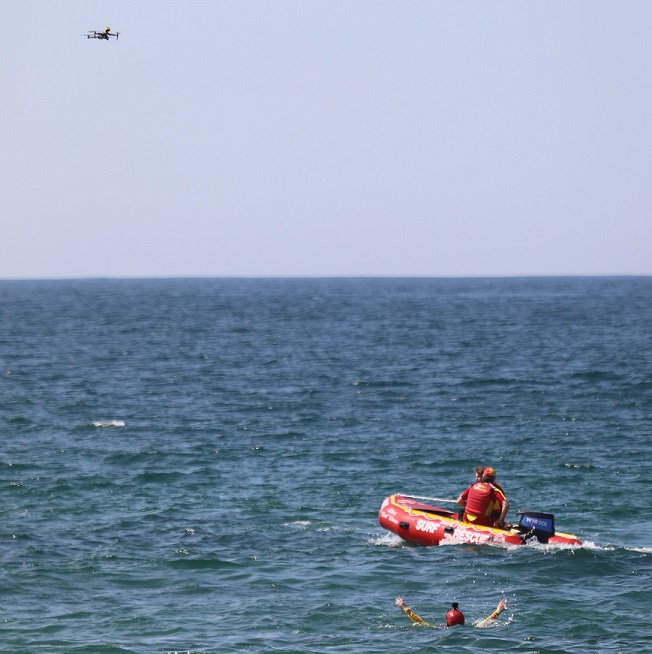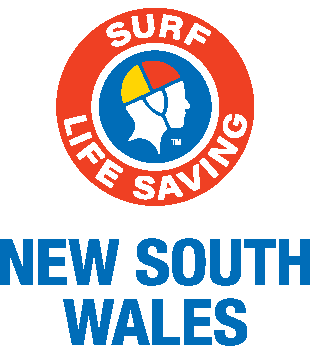Surf Life Saving NSW has had a long association with aviation over its 112-year history – operating both fixed-wing aircraft and helicopters for search and rescue and marine creature surveillance. Now a new breed of ‘dry lifesaver’ is being trained to use unmanned aerial vehicle (drone) technology to help keep beachgoers safe on the NSW coastline.
In 2018 Surf Life Saving NSW became a gazetted emergency service organisation. Volunteers can be asked to respond to calls for assistance alongside police, ambulance and other emergency service organisations.
To enhance its capability, SLSNSW has established an extensive unmanned aerial vehicle (UAV) program to assist with beach safety, coastal surveillance, surf sports event management and search and rescue. UAVs, or drones as they’re more commonly known, have quickly become an integral part of surf life saving operations.
In December 2018, Surf Life Saving Australia partnered with Westpac to launch the Westpac Life Saver Rescue Drone Program. This saw 35 drones take to the skies across the NSW coastline as part of Australia’s first comprehensive approach to search and rescue using innovative drone technology.
The Westpac Lifesaver Rescue Drones are used by surf lifesavers and lifeguards to support rescue operations along Australia’s coastline and assist with critical response surveillance during emergencies.
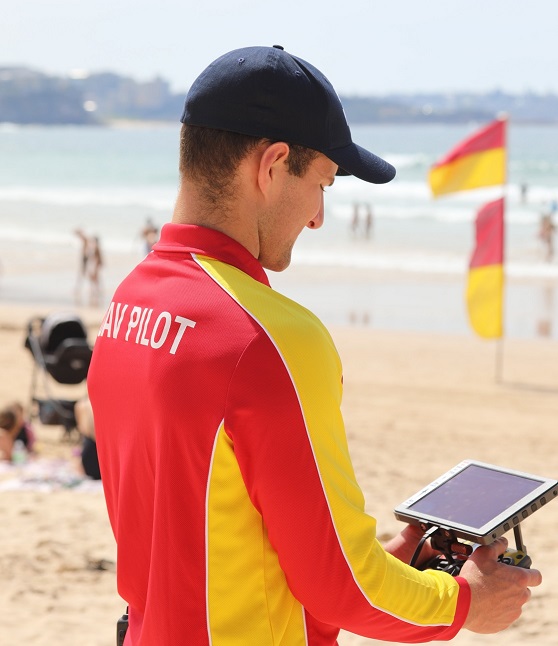
In addition to search and rescue operations, SLSNSW has partnered with the Department of Primary Industries (DPI) for marine creature surveillance and operates 30 UAVs through this partnership. An additional 25 training UAVs will be added to the SLSNSW fleet during 2020.
UAVs are now used extensively in surf life saving patrols. The UAVs used are in the sub-2kg category and incorporate a high-definition camera and loudspeaker. Operating in almost 50 locations, SLSNSW currently has almost 70 drones working constantly along the NSW coastline.
“We initially introduced drones as a tool to complement all our other assets and resources. With the increase in technology, they’re becoming an essential part of our search and rescue operations,” said Paul Hardy, UAV Operations Coordinator and Chief Remote Pilot.
With over 70 drones in the air along the NSW coastline, keeping track of their exact location can be challenging. SLSNSW employs a number of flight tracking technologies including AVCRM (a cloud-based regulatory and compliance portal for all UAV operations) and AIRDATA (a cloud-based system to provide additional visibility to the UAV team on flight compliance and aircraft diagnostics) - which is used to track and log all flights.
Surf Life Saving operates in both the Commercial Excluded and Remote Operators Certificate (ReOC) categories and has advanced RePL trained pilots in many locations. It adheres to all the Civil Aviation Safety Authority (CASA) safety requirements.
SLSNSW Seeks Dry Lifesavers
New UAV technology has enabled SLSNSW to create a new breed of “dry lifesaver” – volunteers who needn’t have any swimming ability to become a patrolling surf lifesaver. Pilots come from diverse backgrounds and include Qantas pilots right through to people with little or no aviation background whatsoever.
“We train pilots from diverse backgrounds. We encourage anyone who’s interested in becoming a UAV pilot to contact us, regardless of previous surf life saving or aviation experience,” said Paul Hardy from SLSNSW.
SLSNSW is actively recruiting and training pilots to boost its pool of 80 paid and 190 volunteer UAV pilots. SLSNSW runs its own pilot training programs along the NSW coastline.
Training consists of an internal training package delivered via a mix of theoretical and practical coaching and assessments. This is delivered to UAV pilots operating in the sub-2kg Commercial Excluded Category and exceeds CASA’s training requirements.
Although the current COVID-19 health emergency has put a hold on upcoming UAV Pilot courses, we are still accepting expressions of interest. Once our courses are back up and running, a member of our UAV team will contact you to discuss your application further.
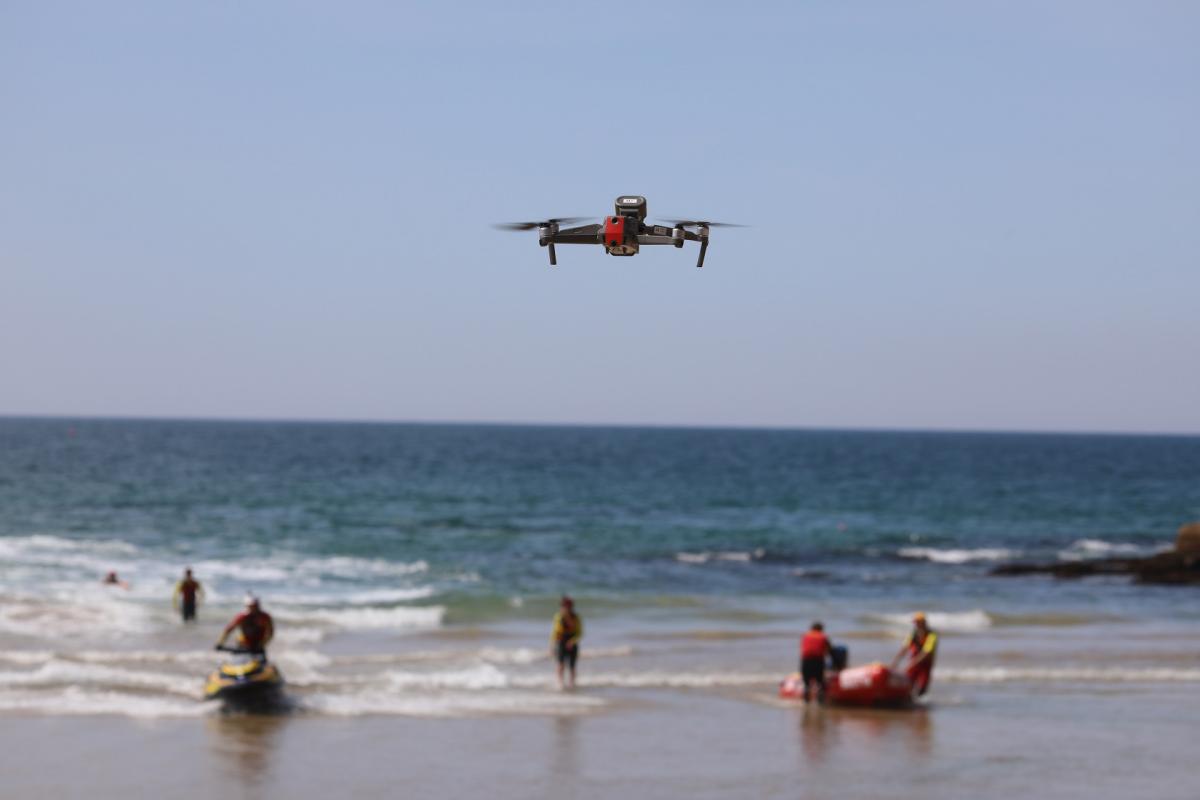
Beach Safety and UAV Awareness
Surf Life Saving NSW is focused on safety and procedures are in place to ensure that CASA rules and regulations are adhered to at all times.
Surf Life Saving NSW’s primary responsibility is to keep beaches safe for the public and its UAV operators actively educate private drone operators about the laws surrounding UAV use on and above beaches.
“Members of the public are increasingly aware that because SLSNSW is an emergency service organisation, they are unable to fly private drones at the beach when our UAVs are operating in the area,” said Paul Hardy, SLSNSW UAV Operations Coordinator.
“Beaches are an attractive place to fly drones and are used widely by the public to film activities like surfing and sailing and marine life like whales, dolphins and sharks. However, there are strict guidelines in place for the operation of UAVs near people and marine life.
“We encourage all private UAV pilots to familiarise themselves with rules for flying drones at the beach before they launch a drone,” he said.
With a presence at 129 of the most visited beaches across NSW, surf clubs are a frontline for communicating flight safety messaging to private drone pilots who may not be familiar with the regulations.
Surf Life Saving NSW continues to adopt new technology as it strives to achieve its goal of zero preventable deaths on the NSW coastline. Given its early success in surf life saving operations, it’s clear that UAV drone technology will continue to play an important part in coastal drownings prevention measures.
